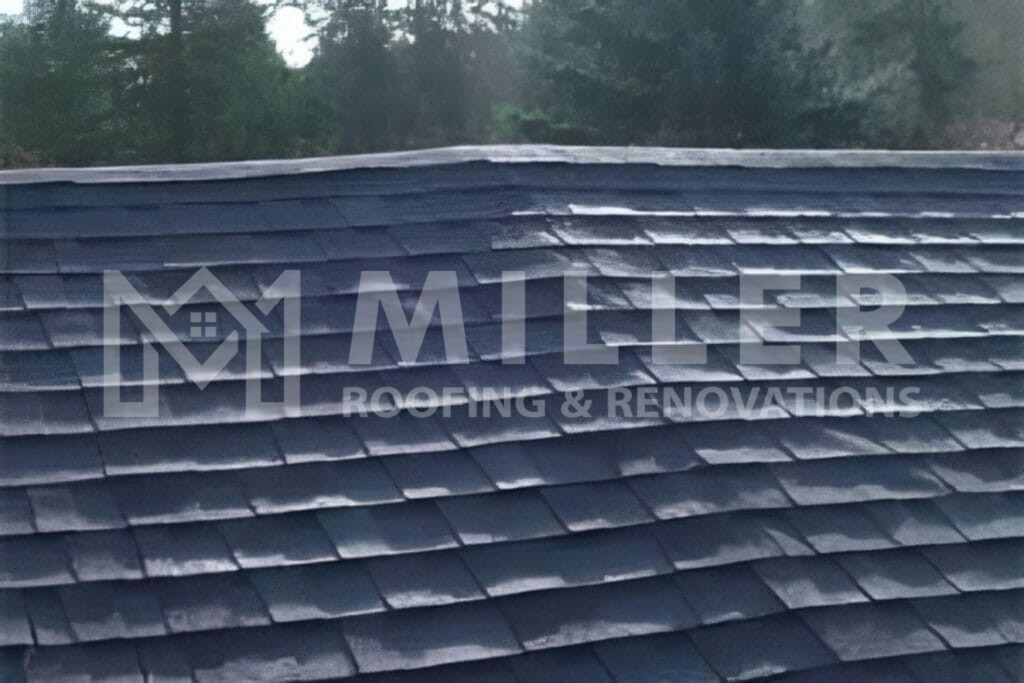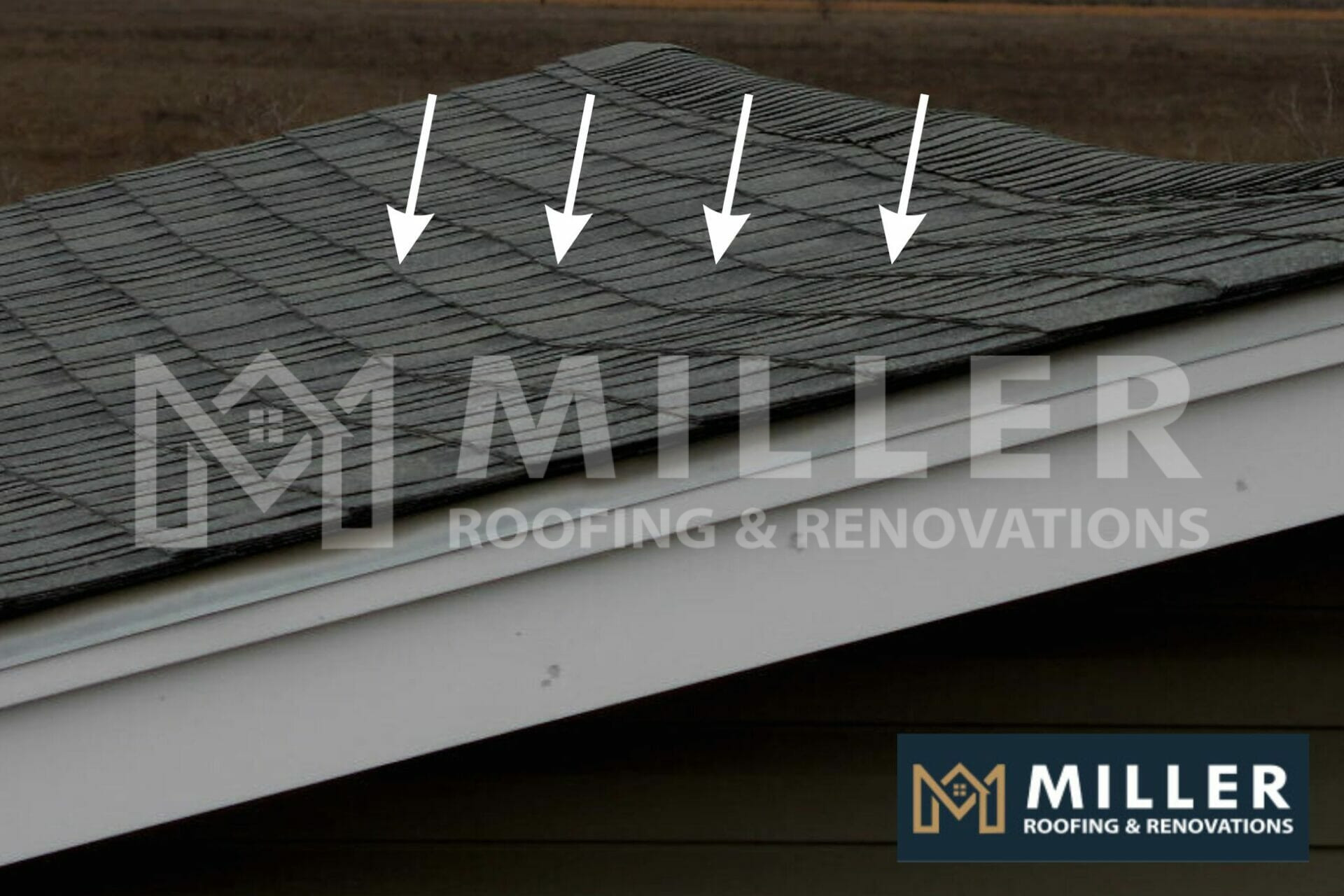A solid and sturdy roof is essential for the safety and protection of a home. It keeps out the elements, provides insulation and adds structural integrity to a building. On the other hand, a sagging roof is a cause for concern, indicating that the roof’s structure has weakened and is no longer providing adequate protection.
A sagging roof is not only unsightly but also poses a risk to the inhabitants of a building, as it can cause the roof to collapse if left unaddressed.
In this guide, we will discuss how to fix a sagging roof without replacing it, and highlight the importance of maintaining a strong and sturdy roof structure. By addressing a sagging roof, you can protect your home, improve its appearance, and ensure its longevity.
What Is A Sagging Roof?
A sagging roof is a condition in which the roof of a building appears to droop or sag downward, usually in the middle. This can occur due to several reasons, including overloading the roof, or poor design.
A sagging roof can be a sign of more serious underlying issues, such as a weakened roof structure, rot in the roof decking, or inadequate support. If left unaddressed, a sagging roof can lead to further damage, such as leaks, water damage, and even roof collapse.
Causes Of Roof Sag: Why Is Your Roof Sagging?
It is essential to determine the cause of a sagging roof before attempting to fix it. This will help you choose the most effective solution. Several factors can cause your roof to sag and decrease your home’s curb appeal.
Be on the lookout for the following signs:
Age
Over time, roofs can deteriorate and lose their structural integrity, leading to sagging. This is especially common in older homes with roofing systems that are more than 20 or 25 years old.
Lack of Maintenance
Neglecting regular maintenance and inspections for your roof can result in damage and weaken the structure, which may lead to sagging. This is why performing regular inspections and cleaning the roof is important.
Overloading
Some types of roofs are not able to handle a lot of weight. A roof that is overloaded with too much weight from heavy snow, debris, or water, can cause sagging.
Structural Damage
Damage to the roof’s underlying structure, such as a broken or damaged truss or rafter, can cause the roof to sag. This is one of the major reasons that roofs collapse, and we will cover how to prevent this later on in the blog.
In the following section, we will discuss how you can take care of this problem and bring a roof back to its optimal condition.
Also Read: Rafters Vs Trusses: Why Should You Care
Preparing For The Job
Before we move on to the steps to fix your roof, understand that roofing is a tough job that requires skill and experience. Therefore, it is important to take the following steps to ensure a safe and effective repair process.
It is essential to prioritize safety. Wear appropriate safety gear, such as a hard hat, safety glasses, and sturdy shoes with good traction. It is also essential to have someone on the ground to assist you.
Tools Required For Fixing A Roof
Gather all the necessary tools and materials before starting the repair process. This may include the following:
- Brackets
- Steel “L” Channel
- Support beams
- Screws
- Nails
- Lag Bolts
- Drilling Machine
These are the basic tools that will help you during your roof repair project. You can also use any other supplies needed for the specific repair you are making.
By adequately preparing for the repair process, you can ensure a safe and effective repair and minimize the risk of further damage to your roof.

Steps To Fix A Sagging Roof
It is important to address a sagging roof as soon as possible to prevent further damage and ensure the safety of the building and its occupants. Here are the steps you can take to treat your sagging roof.
Step 1: Inspect The Roof From Multiple Angles
Before starting any repairs, it is vital to assess the severity of a sagging roof. You can do this by performing a proper roof inspection. Inspecting the roof from different angles is a crucial step in assessing the severity of a sagging roof. This helps to understand the extent of the damage and the underlying cause of the sagging.
First, start your inspection with the outside of the roof. Then move to the interiors to check if there is any damage. Move to the attic area to check the condition of your roof rafters. Look for any signs of damage to the roof decking or supports, as these can be contributing factors to sagging.
Step 2: Use An “L” Channel To Treat The Roof
As we have already mentioned, there can be multiple reasons behind a roof sagging, and the most likely problem is with your rafters themselves. You need to install a steel “L” shape channel to fix your broken trusses or rafters.
Preparing An “L” Channel
Using an “L” channel made of steel is a method to reinforce the roof structure and fix a sagging roof without replacing it. The size of the section will vary depending on the extent of the damage. However, you should use a steel “L” channel that is at least 2-3 feet long.
Start by making four holes in the base of the steel channel. After this, start drilling four holes on the side of the channel, and remember that the holes should be equally spaced from each other.
Step 3: Mounting The “L” Channel
Now that you have prepared the section, it is time to mount the “L” channel to the area beneath the rafter.
Attach the “L” channel to the underside of the roof decking, running parallel to the rafters.
Use screws or lag bolts to secure the channel, ensuring it is properly aligned and level.
Step 4: Fixing The Gusset Plate
A gusset plate is a triangular metal plate used in construction to reinforce joints and increase the stability of a structure. The gusset usually has a shiny, gray, or silver color and is used to strengthen the joints between roof trusses and rafters. Due to added weight or improper installation, the gusset plate may break.
The contractor will install the gusset plate on both sides of the trusses at the time of installation. Since the metal plate is joined using high pressure to pierce through the wooden truss, it is extremely difficult to join them again once it comes off.
If during an inspection, you notice that the gusset plate is damaged or has come apart, then it can compromise the structural integrity of your roof. Therefore, you need to address this problem immediately.
Here is how you can do this:
Take out the gusset plate that has detached from the wood. Substitute the original with a 1/2-inch plywood gusset. Since you cannot install the metal plate again, plywood will act as a strong alternative. Secure the gusset to both sides of the wooden pieces using a nail gun.
Step 5: Other Reinforcements To Make For A Sagging Roof
There are other ways to ensure your roof gets back to its best shape. Use the following ideas to further strengthen your roofing system:
Adding Braces
Braces can be used to provide additional support to the roof’s structure and help prevent further sagging. Mounts can be added to the roof’s structure by attaching them to the rafters, either at the ridge or along the roof’s length.
Installing Support Beams
You can install support beams to support the roof structure and prevent further sagging. These beams can be placed along the roof, between the rafters, and can be attached to the roof structure with brackets or screws.
Step 6: Hire A Professional Roofing Contractor
Using the tools we have listed, and working in the attic, is not for everyone. This roofing repair process will require knowledge and expertise, and may also be dangerous for you to do alone.
A professional contractor will have the necessary skills and equipment to assess the extent of the damage properly, determine the cause of the sagging, and provide an effective solution to fix the problem. Since professionals have the required training and credentials, they can ensure that your roof is adequately repaired and protected.
Miller Roofing and Renovations: Memphis’s Trusted Name For Roofing
As we have seen, it is always a good idea to contact a professional for high-risk jobs such as roofing. If you are also facing trouble with your roof and are looking for a reliable roofing contractor, look no further than the team at Miller Roofing and Renovations.
We can fix a sagging roof with professional roofing techniques so that you do not face this type of problem again. We have years of experience in roof repairs and replacements and have an excellent reputation in Memphis and surrounding areas of Tennessee. Don’t wait, contact us today at (901) 457-9405, and get your roof back in its best condition.



 FREE ESTIMATE
FREE ESTIMATE